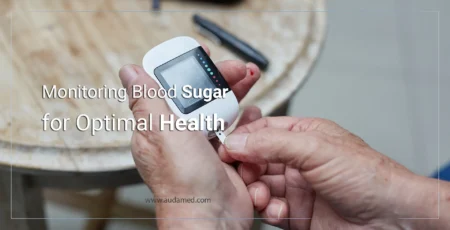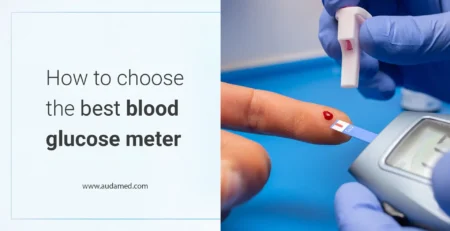Living Well with Urinary Incontinence: Tips, Strategies, and Innovations
Urinary incontinence is a prevalent and often debilitating condition that affects millions of individuals worldwide. It can be particularly challenging for those who experience it, impacting their quality of life, self-esteem, and daily activities. In this comprehensive guide, we will delve deep into the world of urinary incontinence, offering practical tips, lifestyle changes, exercise regimens, nutritional considerations, and exploring innovative solutions like the HAREX® Premium Male Urinary Incontinence Control Device.
Understanding the Complexity of Urinary Incontinence
To effectively manage urinary incontinence, it’s essential to comprehend the intricacies of this condition. Urinary incontinence occurs when there is an involuntary loss of urine, and it can manifest in various forms. Let’s explore the different types:
1. Stress Incontinence
Stress incontinence is perhaps the most common form of urinary incontinence, affecting both men and women. It occurs when there is an increase in abdominal pressure, leading to the unintentional release of urine. Everyday actions such as sneezing, laughing, coughing, lifting heavy objects, or even physical activities like running and jumping can trigger stress incontinence.
2. Urge Incontinence
Urge incontinence, on the other hand, is characterized by a sudden and intense urge to urinate that is difficult to control. Individuals with this form of incontinence often experience a “gotta-go” sensation and may not make it to the restroom in time. Conditions such as diabetes, Alzheimer’s disease, multiple sclerosis, and stroke can contribute to urge incontinence.
3. Overflow Incontinence
Overflow incontinence occurs when the bladder doesn’t empty properly, leading to a constant dribbling of urine. This can be due to an obstruction, weak bladder muscles, or nerve damage. In men, an enlarged prostate can sometimes cause overflow incontinence.
4. Functional Incontinence
Functional incontinence is not directly related to bladder issues but results from physical or cognitive limitations that hinder an individual from reaching the restroom in time. Conditions like arthritis, mobility problems, or cognitive impairments can lead to functional incontinence.
Now that we have a grasp of the different types of urinary incontinence, let’s explore strategies to help individuals effectively manage this condition and regain control of their lives.
Lifestyle Changes for Effective Incontinence Management
Managing urinary incontinence often starts with making specific lifestyle changes. These modifications can significantly improve bladder control and minimize the impact of incontinence on daily life.
1. Dietary Adjustments
What you eat and drink can have a profound impact on urinary incontinence. Here are some dietary adjustments to consider:
a. Limit Caffeine: Caffeine is known to irritate the bladder and can exacerbate incontinence symptoms. Reducing or eliminating caffeine from your diet can lead to improvements.
b. Watch Alcohol Intake: Like caffeine, alcohol can also irritate the bladder. Moderation is key when it comes to alcohol consumption.
c. Avoid Spicy Foods: Spicy foods may contribute to bladder irritation in some individuals. Reducing the consumption of spicy dishes can help alleviate symptoms.
d. Stay Hydrated: While it may seem counterintuitive, staying properly hydrated is crucial. Dehydration can lead to concentrated urine, which can irritate the bladder. The key is to maintain a balance between hydration and avoiding excessive fluid intake before bedtime.
2. Bladder Training
Bladder training is a behavioral therapy technique that can be highly effective in regaining control over your bladder. The goal is to gradually increase the time between restroom visits. Here’s how to get started:
a. Create a Schedule: Begin by setting specific times for urination, gradually increasing the intervals. For example, if you currently go every hour, try to extend it to an hour and fifteen minutes. Over time, you can further extend the intervals.
b. Use a Diary: Keep a bladder diary to track your progress. Note the times you urinate and any instances of leakage. This can help you identify patterns and make necessary adjustments.
c. Be Patient: Bladder training takes time and consistency. It may take several weeks to see significant improvements, so remain patient and persistent in your efforts.
3. Maintain a Healthy Weight
Extra weight can put added pressure on the bladder and exacerbate urinary incontinence symptoms. Losing weight through a balanced diet and regular exercise can alleviate these symptoms and improve overall health.
Pelvic Floor Exercises: Strengthening the Key Muscles
One of the most effective ways to address urinary incontinence is by strengthening the pelvic floor muscles. These muscles play a crucial role in maintaining bladder control, and exercising them can make a significant difference.
Kegel Exercises
Kegel exercises, also known as pelvic floor exercises, specifically target the muscles responsible for bladder control. Here’s a step-by-step guide:
1. Identify the Right Muscles: To isolate the pelvic floor muscles, try stopping the flow of urine midstream during a restroom visit. The muscles you engage to do this are your pelvic floor muscles.
2. Kegel Exercises: Contract these muscles and hold for a count of three, then relax for a count of three. Repeat this ten times, aiming for three sets of ten repetitions daily.
3. Consistency is Key: Like any exercise routine, consistency is essential. It may take several weeks to see significant improvements, so don’t get discouraged if results aren’t immediate.
Nutritional Considerations for Bladder Health
Incorporating specific nutrients into your diet may help manage urinary incontinence and improve overall bladder health.
1. Fiber
A high-fiber diet can help prevent constipation, which, in turn, can worsen urinary incontinence symptoms. Fiber-rich foods like fruits, vegetables, and whole grains should be staples in your diet.
2. Probiotics
Probiotics are beneficial bacteria that can help maintain a healthy balance of microorganisms in your gut. Some studies suggest that probiotics may help improve urinary symptoms, so consider incorporating yogurt, kefir, or probiotic supplements into your diet.
3. Fluid Balance
As previously mentioned, maintaining the right balance of fluids is crucial. Consult with a healthcare provider or a nutritionist to determine the appropriate fluid intake for your specific needs.
Innovative Solutions: HAREX® and Improved Quality of Life
While lifestyle changes and exercises play a significant role in managing urinary incontinence, innovative products like the HAREX® Premium Male Urinary Incontinence Control Device are revolutionizing the field.
Introducing HAREX®: A Premium Solution
HAREX® is a groundbreaking medical device designed to provide an effective and discreet solution for male urinary incontinence. Placed just below the opening of the penis, it gently applies pressure to the urethra, stopping the flow of urine and preventing accidental leakage.
Key Features of HAREX®:
- Effective Solution: HAREX® has proven to be extremely effective in managing male urinary incontinence. By gently applying pressure to the urethra, it prevents urine leakage, giving individuals the confidence to go about their daily activities without worry.
- Improved Quality of Life: Living with urinary incontinence can be challenging and affect self-confidence and daily activities. HAREX® was developed to give individuals back control of their lives, enabling them to enjoy their favorite activities without the fear of embarrassing leaks.
- Comfort and Discretion: Comfort and discretion are paramount when it comes to managing urinary incontinence. HAREX® is discreetly designed and offers comfort throughout the day. Users can move freely without discomfort or visible marks under their clothing.
- Simple Application: HAREX® is user-friendly, with clear instructions for application and removal. This makes it easy to integrate into your daily routine.
Real-World Testimonials
The effectiveness of HAREX® is best demonstrated through the experiences of those who have used it to manage their urinary incontinence:
Roy J. Phllips (49 years old, UK): “It was a useful option for me to moderate urinary incontinence, and I didn’t find the need to undergo surgery or other invasive procedures.”
Javier Gonzales (52 years old, Spain): “It is a discreet and convenient option for managing urinary incontinence. I wore it throughout the day and is not visible under clothing, which is the best thing.”
William Muller (48 years old, Germany): “Harex has a high level of effectiveness in minimizing urinary leakage, and patients have reported no adverse effects from the device.”
Rite (67 years old, Belgium): “Robert was becoming a grumpy old man, ashamed to even see the grandchildren… Since the pharmacist gave us Harex, Robert’s mood has improved.”
Understanding the Prevalence of Male Urinary Incontinence
To appreciate the significance of solutions like HAREX®, it’s essential to understand the prevalence of male urinary incontinence:
Unexpected Health Statistics
- Urinary incontinence affects approximately 7% of the world’s male population. In an unexpected statistic, it becomes clear that urinary incontinence is a widespread health problem that affects a significant portion of the world’s male population. About 7% of men worldwide experience urinary incontinence at some point in their lives, a condition often associated with stigma and shame.
A Surprising Finding
- Not only older adults are affected. There’s a surprising finding about urinary incontinence: This condition isn’t just limited to older adults. In fact, about 10% of male patients with urinary incontinence are younger than 40 years old.
HAREX®: European Accreditation Certified
We are proud to announce that Harex is EA (European Accreditation) certified and therefore meets the strict regulations set by the European Parliament and Council. Our commitment to excellence is further underlined by obtaining the EC certificate in accordance with Regulation (EU) 2017/745 of the European Parliament and of the Council of April 5, 2017, on medical devices. This certification guarantees that Harex adheres to the strict guidelines and requirements necessary to ensure the safety and effectiveness of medical devices.
Choose Harex for your medical devices and experience the peace of mind that comes with a product certified to the highest European standards.
Conclusion: Embracing a Life Without Limits
In conclusion, living well with urinary incontinence is not only possible but achievable with the right strategies and innovative solutions like HAREX®. By making lifestyle changes, incorporating exercise routines, and considering nutritional adjustments, individuals can significantly improve their bladder health and regain control over their lives.
HAREX® stands as a testament to the advancements in medical technology, providing an effective, discreet, and comfortable solution for male urinary incontinence. Real-world testimonials highlight its positive impact on the lives of those who have used it, offering renewed confidence and freedom.
Understanding the prevalence of male urinary incontinence underscores the importance of addressing this issue with compassion and effective solutions. With HAREX® and a commitment to embracing a life without limits, individuals can continue to pursue their passions, maintain their independence, and enjoy each day to the fullest, irrespective of urinary incontinence.
Remember that you are not alone in this journey, and there are resources and products available to support you on your path to better bladder health and an improved quality of life.







Leave a Reply